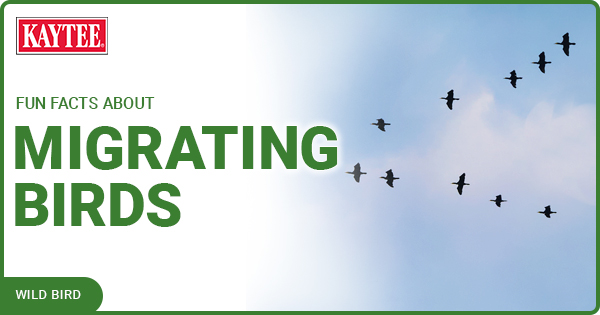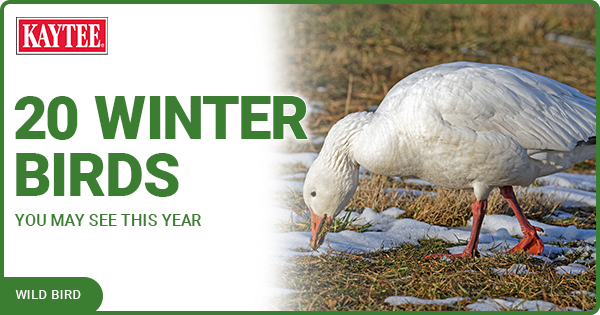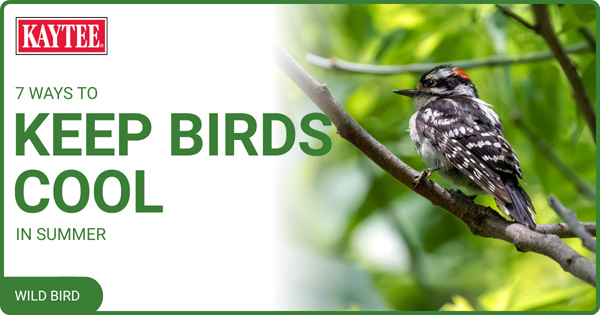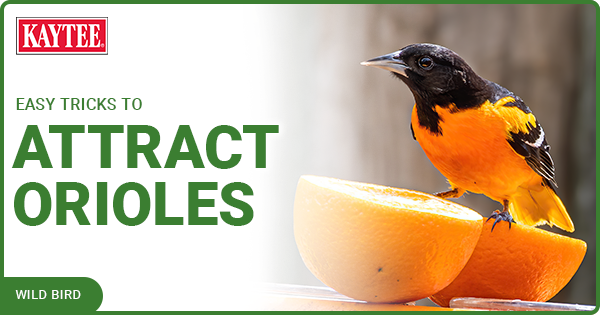Why Birds' Diets Change
Just as we change our diets throughout the year from fresh spring berries and salads to rich summer barbecues to hearty autumn and winter soups, stews, and roasts, wild birds also change their diets seasonally. While a bird's dietary changes have less to do with seasonal tastes or personal preferences and more to do with food availability and nutritional needs, the better backyard birders understand birds' diets throughout the year, the better they can adjust feeders and feeding stations to attract more hungry birds with a nutritious meal or snack.
How Birds' Nutritional Needs Change
Wild birds need different foods at different times of the year to meet different nutritional demands. In early spring and late summer, for example, birds are molting into fresh plumage and require extra amounts of protein to grow strong, supple feathers for efficient flight. Fresh feathers also have brighter, more vibrant colors to attract a healthy mate in spring. During these molting periods, many birds seek out extra insects and protein-rich food sources such as suet.
During the summer months, a more varied diet is best for wild birds, especially if it includes extra sources of protein and calcium to support healthy breeding through strong eggshells and protein to nurture growing chicks. The summer months are when a variety of natural foods are most abundant, and when birds have more foods available, they can more easily raise a healthy brood.
During the peak of migration in spring and fall, wild birds need more fat and calories in their diets to fuel their intense journeys. During migration, birds eat more sugars, fruits, nectars, and other high-calorie foods to gain weight. The blackpoll warbler, for example, will nearly double its weight by gorging on berries and sugar-rich aphids in late summer and early fall as it prepares for a lengthy migration.
In winter, birds seek out the richest sources of fat and calories to give them enough energy to survive long, cold nights and bitter cold snaps. This is when oil-rich seeds and nuts are the best foods, and many birds cache those foods in autumn to store them for the leaner weeks of winter. Black-capped chickadees, tufted titmice, blue jays, and many species of woodpeckers are all expert hoarders, able to hide food in many locations and remember those stashes when food may be scarce in winter. The acorn woodpecker even creates “granary trees” where a family of woodpeckers will store thousands of acorns, all meticulously arranged in individual holes, ready to be eaten when the need arises.
Finding The Best Foods
Wild birds instinctively seek out the best food sources at different times of year, and their seasonal behaviors reflect that food availability. For example, migrating red knots and other shorebirds time their spring migration with horseshoe crab spawning cycles. When the crabs are swarming on beaches to lay eggs, the birds can feast on that bounty to refuel along the way. The Mid-Atlantic seaboard is a prime spot for horseshoe crab spawning, and is halfway between many shorebirds' winter range in South America and their breeding ranges in the Arctic. Migrating shorebirds along the eastern United States take hearty advantage of this seasonal food source.
Other birds adjust the routes of their seasonal migrations based on other seasonal foods. The rufous hummingbird, which migrates from Mexico to Alaska, uses a western coastal route during its northward spring migration, when the warmer waters of the Pacific Ocean have created an early spring and encouraged blooming flowers along the coast. In late summer and early fall, however, the rufous hummingbird heads south not along the same coastal route where flowers are long gone, but instead along an interior route that crosses through mountain meadows where late season flowers are still blooming their best.
On a less dramatic scale, these types of feeding adjustments can often be seen as wild birds take advantage of the most readily available foods throughout the year. Cedar waxwings roam nomadically all year long wherever berry bushes and fruit trees are abundant, while different winter finches may seasonally irrupt when seed and pine nut crops are strong enough to support larger populations. Even raptors change their food sources based on availability, such as snowy owls migrating further south during harsh winters in order to find more prey in southern regions.
Best Seasonal Foods To Offer Birds
In the yard, birders can adapt their feeders and feeding stations to accommodate wild birds' changing needs and attract even more hungry birds.
Spring – Nectar, fruit, and sunflower seed offer great nutrition for migrating birds as well as resident species beginning their nesting season. Multiple feeders, including hoppers and platforms, can provide safe, comfortable feeding stations for different types of birds. Keep suet cakes out in early spring for even more energy when nighttime temperatures are still low.
Summer – Though natural foods are abundant in summer, extra feeders filled with nectar, black oil sunflower seeds, fruit, and mealworms can give parent birds a convenient, easy option to nourish hungry nestlings. Adding crushed, lightly toasted eggshells to a birdseed mix is a great way to give wild birds extra calcium for laying strong, healthy eggs.
Autumn – High-energy foods such as peanuts, peanut butter, nut and fruit blend seed mixes, and black oil sunflower seeds are ideal for giving autumn birds enough energy to prepare for winter or start on their seasonal migrations. Larger feeders can accommodate hungry flocks and birds that may be passing through so every bird gets a good meal.
Winter – Foods rich in oils and carbs are best for feeding winter birds, to help them have enough calories to stay warm and healthy. Nyjer® seed offered in sock feeders is popular with redpolls, siskins, and other winter finches, while sunflower seed is always a great choice for many winter birds. Cracked corn is a starchy, carbohydrate-rich option for feeding ground birds such as doves, quail, and turkeys all winter long, while suet is a favorite for many winter bird species.
No matter which season it is or what foods are being offered, it is best to use covered feeders that can protect birdseed and other foods from rain or snow that could create mold. Spoiled seed can be toxic to birds, and feeders should be cleaned regularly to protect birds from diseases. Using baffles above and below feeders will also help keep other wildlife, such as squirrels and raccoons, from usurping the food before birds have a chance to eat.
Wild birds will come to backyard feeding stations throughout the year, especially if birders offer specialized foods chosen to meet birds' seasonal nutritional needs. By better understanding how birds' diets change throughout the year, it is easier to offer the very best foods to nourish a healthy and happy backyard flock all year long.
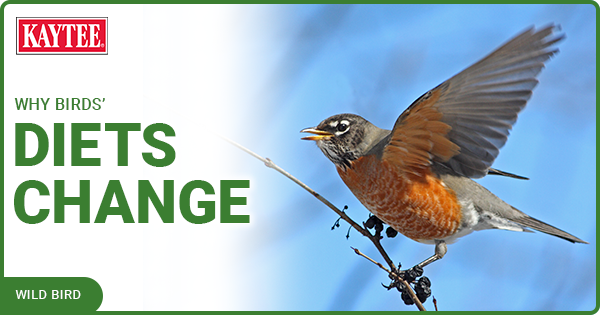
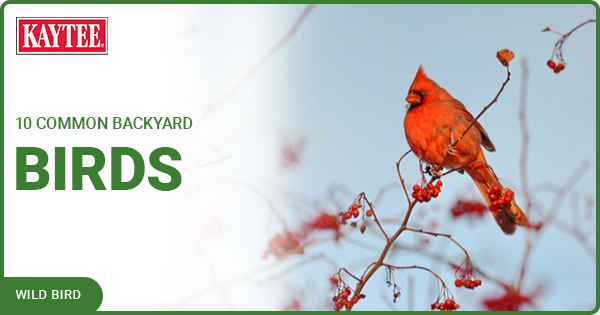


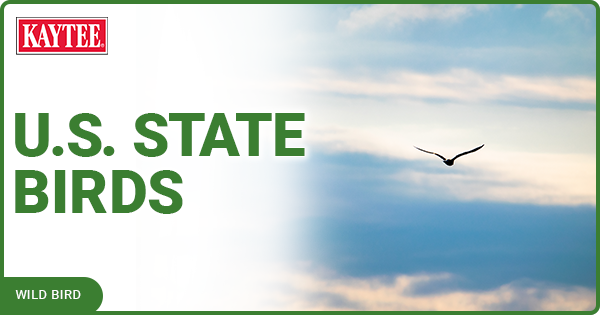
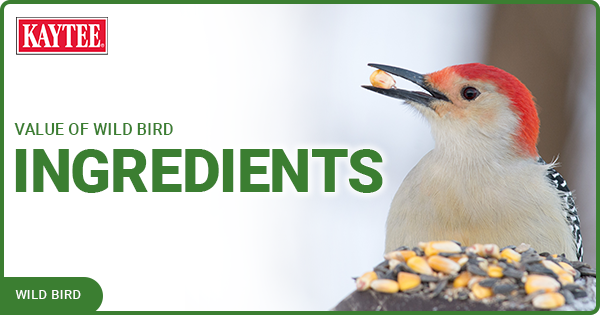
.png?h=315&iar=0&w=600&hash=9C09A701CB4D5CF9B2C5B7FA2DA01F2E)
